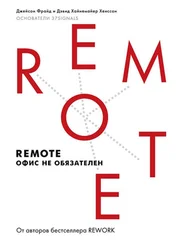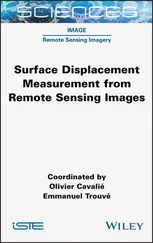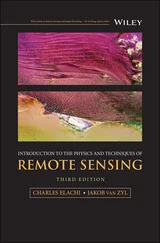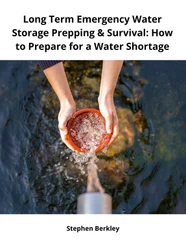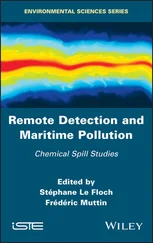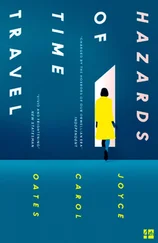Remote Sensing of Water-Related Hazards
Здесь есть возможность читать онлайн «Remote Sensing of Water-Related Hazards» — ознакомительный отрывок электронной книги совершенно бесплатно, а после прочтения отрывка купить полную версию. В некоторых случаях можно слушать аудио, скачать через торрент в формате fb2 и присутствует краткое содержание. Жанр: unrecognised, на английском языке. Описание произведения, (предисловие) а так же отзывы посетителей доступны на портале библиотеки ЛибКат.
- Название:Remote Sensing of Water-Related Hazards
- Автор:
- Жанр:
- Год:неизвестен
- ISBN:нет данных
- Рейтинг книги:5 / 5. Голосов: 1
-
Избранное:Добавить в избранное
- Отзывы:
-
Ваша оценка:
- 100
- 1
- 2
- 3
- 4
- 5
Remote Sensing of Water-Related Hazards: краткое содержание, описание и аннотация
Предлагаем к чтению аннотацию, описание, краткое содержание или предисловие (зависит от того, что написал сам автор книги «Remote Sensing of Water-Related Hazards»). Если вы не нашли необходимую информацию о книге — напишите в комментариях, мы постараемся отыскать её.
Remote Sensing of Water-Related Hazards Remote Sensing of Water-Related Hazards
The American Geophysical Union promotes discovery in Earth and space science for the benefit of humanity. Its publications disseminate scientific knowledge and provide resources for researchers, students, and professionals.
Remote Sensing of Water-Related Hazards — читать онлайн ознакомительный отрывок
Ниже представлен текст книги, разбитый по страницам. Система сохранения места последней прочитанной страницы, позволяет с удобством читать онлайн бесплатно книгу «Remote Sensing of Water-Related Hazards», без необходимости каждый раз заново искать на чём Вы остановились. Поставьте закладку, и сможете в любой момент перейти на страницу, на которой закончили чтение.
Интервал:
Закладка:
Advances in sensor technology make high‐resolution SAR imagery data with a spatial resolution as fine as 0.3 meters available for distinguishing manmade objects in urban areas, such as bridges, roads, and drainage systems. In chapter 8, Liu et al. present an investigation to understand the backscattering characteristics of bridges over water using TerraSAR‐X satellite images and Pi‐SAR2 airborne images. The difference and correlation coefficient of the backscattering intensity between the SAR images before and after the hazard events were calculated to detect potential flood damages. Using both SAR and aerial photos, they demonstrate that high‐resolution SAR images can provide a valuable and effective way to accurately detect collapsed bridges caused by extreme events.
Part III: Remote Sensing of Droughts and Associated Hazards
Drought poses signicant risks to ecosystems and human society. Effective drought monitoring tools are important for scientists to understand the underlying drives and mechanisms and for decision makers to develop operational strategies for drought management and mitigation.
In chapter 9, Li et al. review the current and emerging drought monitoring approaches based on remote sensing techniques. They present a case study on using remotely sensed precipitation and vegetation data for meteorological and agricultural drought monitoring in Jiangsu Province, China. This chapter also discusses the major gaps, challenges, and potential future research directions for remote sensing of drought.
In chapter 10, Zhang et al. review the definition and quantification of drought and mechanisms that control vegetation responses to it. They then introduce two methods to detect vegetation stress under drought disturbances based on remote sensing of vegetation and hydroclimatology. Yunnan Province, a key ecozone in China, is presented as a case study area to analyze drought dynamics and their impacts on ecosystem water use efficiency. This provides a valuable reference for studying and monitoring vegetation responses to drought using spaceborne optical and near‐infrared sensors.
Physical water scarcity indicates the lack of sufficient water resources to meet human and environmental demands. In chapter 11, Hasan and Tarhule present a study on quantifying physical water scarcity based on the water scarcity indicator derived from the Gravity Recovery and Climate Experiment (GRACE) data. They introduce an approach for quantifying potentially available water through the integration of the GRACE data, reanalysis precipitation, and total evapotranspiration estimates using the Noah land surface model.
In chapter 12, Lv and Ma examine water cycle variation in the Yellow River Basin using both satellite remote sensing and numerical modeling. Considering that current evapotranspiration (ET) products have large uncertainties and irrigation effects on ET are not well represented, this chapter describes a method to reconstruct ET from the Global Land Data Assimilation System (GLDAS) land surface models using observation‐based precipitation, streamflow, and irrigation water. The chapter then describes the attribution analyses of changes in streamflow and GRACE‐derived terrestrial water storage in response to climate, watere cycle, and land use/cover changes. This line of research can provide guidance for the river basin water resource management and risk assessment.
Climate variability and change have dramatically influenced some agricultural areas, including the historic 5‐year drought in California’s San Joaquin Valley and 20‐year drier‐than‐normal conditions in the Red River Valley of the midwestern USA. One impact of protracted droughts is increased soil salinity in the root zone of agricultural areas. Inventorying and monitoring soil salinity is crucial to evaluate the extent of the problem, recognize the trends, and formulate irrigation and crop management strategies for maintaining a sustainable agricultural productivity. In chapter 13, Corwin and Scudiero provide an overview of salinity assessment technologies, including proximal sensor and satellite remote sensing methodologies at multiple scales.
This collection of chapters provides an up‐to‐date overview of the available data, sensors, models, and indicators developed for monitoring and predicting various kinds of water hazards, with case studies drawn from different parts of the world. By presenting contributions from a diverse group of scientists, we hope to bridge some of the gaps between the various disciplines engaged in the remote sensing of hazards.
REFERENCES
1 AghaKouchak, A., Cheng, L. Y., Mazdiyasni, O., & Farahmand, A. (2014). Global warming and changes in risk of concurrent climate extremes: Insights from the 2014 California drought. Geophys. Res. Lett., 41(24), 8847–8852.
2 AghaKouchak, A., Farahmand, A., Melton, F. S., Teixeira, J., Anderson, M. C., Wardlow, B. D., & Hain, C. R. (2015). Remote sensing of drought: Progress, challenges and opportunities. Reviews of Geophysics, 53(2), 452–480.
3 AghaKouchak, A., et al. (2021). Anthropogenic drought: definition, challenges, and opportunities. Reviews of Geophysics, 59. doi:10.1029/2019RG000683
4 Andaru, R., Rau, J. Y., Syahbana, D. K., Prayoga, A. S., & Purnamasari, H. D. (2021). The use of UAV remote sensing for observing lava dome emplacement and areas of potential lahar hazards: An example from the 2017–2019 eruption crisis at Mount Agung in Bali. J Volcanol Geoth Res, 415. doi:10.1016/j.jvolgeores.2021.107255
5 Andreas, H., Abidin, H. Z., Sarsito, D. A., & Pradipta, D. (2020). Remotes sensing capabilities on land subsidence and coastal water hazard and disaster studies. Fifth International Conferences of Indonesian Society for Remote Sensing: The Revolution of Earth Observation for a Better Human Life, 500. doi:10.1088/1755‐1315/500/1/012036
6 Argaz, A., Ouahman, B., Darkaoui, A., Bikhtar, H., Ayouch, E., & Lazaar, R. (2019). Flood hazard mapping using remote sensing and GIS Tools: A case study of Souss Watershed. Journal of Materials and Environmental Sciences, 10(2), 170–181.
7 Bech, J., & Chau, J. L. (2012). Doppler radar observations: Weather radar, wind profiler, ionospheric radar, and other advanced applications. Rijeka, Croatia: InTech.
8 Boni, G., De Angeli, S., Taramasso, A. C., & Roth, G. (2020). Remote sensing‐based methodology for the quick update of the assessment of the population exposed to natural hazards. Remote Sens., 12(23). doi:10.3390/rs12233943
9 Casas, A., Riano, D., Ustin, S. L., Dennison, P., & Salas, J. (2014). Estimation of water‐related biochemical and biophysical vegetation properties using multitemporal airborne hyperspectral data and its comparison to MODIS spectral response. Remote Sens. Environ., 148, 28–41.
10 Du, J., Kimball, J. S., & Jones, L. A. (2016). Passive microwave remote sensing of soil moisture based on dynamic vegetation scattering properties for AMSR‐E. IEEE Transactions on Geoscience and Remote Sensing, 54(1), 597–608.
11 Du, L., Mikle, N., Zou, Z. H., Huang, Y. Y., Shi, Z., Jiang, L. F., et al. (2018). Global patterns of extreme drought‐induced loss in land primary production: Identifying ecological extremes from rain‐use efficiency. Sci. Total Environ., 628–629, 611–620. doi:10.1016/j.scitotenv.2018.02.114
12 Dubovyk, O., Ghazaryan, G., Gonzalez, J., Graw, V., Low, F., & Schreier J. (2019). Drought hazard in Kazakhstan in 2000–2016: A remote sensing perspective. Environmental Monitoring and Assessment, 191(8). doi:10.1007/s10661‐019‐7620‐z
13 Ehrler, C., Seidel, K., & Martinec, J. (1997). Advanced analysis of snow cover based on satellite remote sensing for the assessment of water resources. Remote Sensing and Geographic Information Systems for Design and Operation of Water Resources Systems, 242, 93–101.
Читать дальшеИнтервал:
Закладка:
Похожие книги на «Remote Sensing of Water-Related Hazards»
Представляем Вашему вниманию похожие книги на «Remote Sensing of Water-Related Hazards» списком для выбора. Мы отобрали схожую по названию и смыслу литературу в надежде предоставить читателям больше вариантов отыскать новые, интересные, ещё непрочитанные произведения.
Обсуждение, отзывы о книге «Remote Sensing of Water-Related Hazards» и просто собственные мнения читателей. Оставьте ваши комментарии, напишите, что Вы думаете о произведении, его смысле или главных героях. Укажите что конкретно понравилось, а что нет, и почему Вы так считаете.

